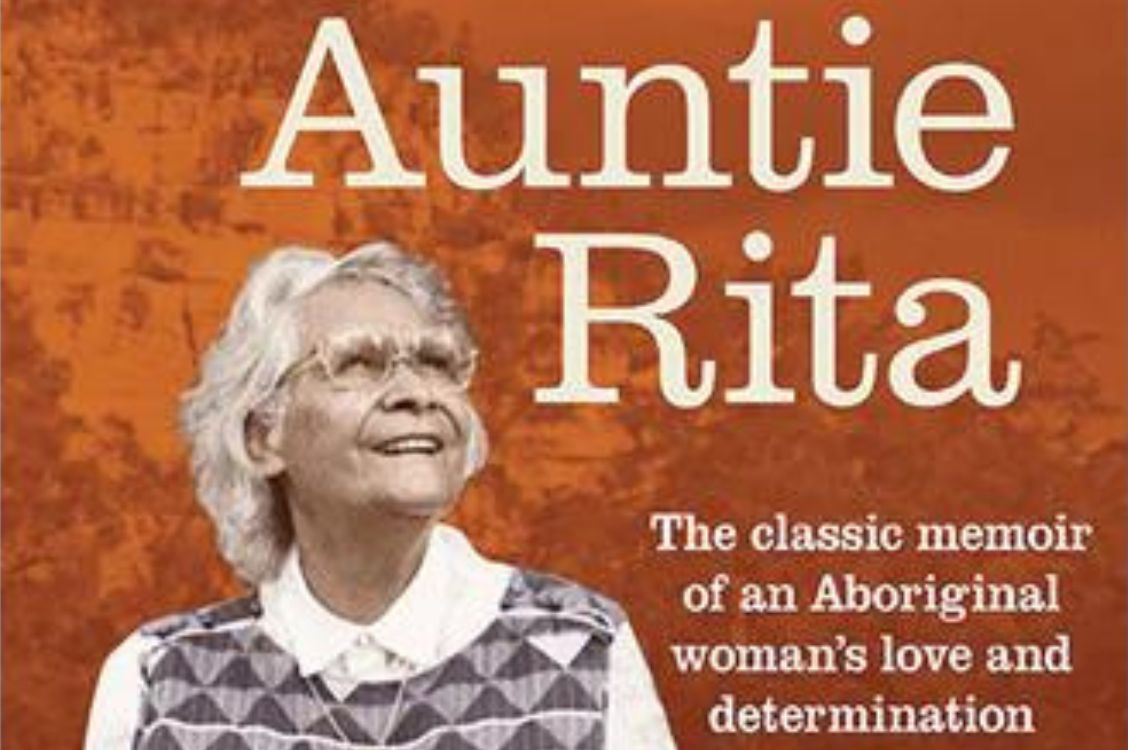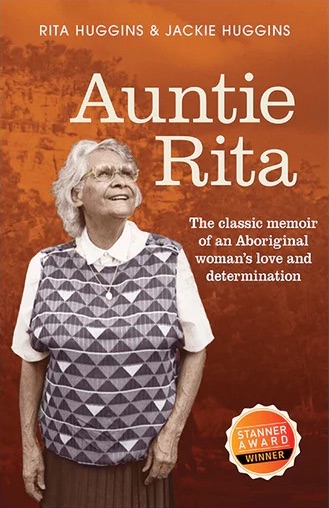
- Free Article: No
- Contents Category: Memoir
- Review Article: Yes
- Article Title: Mother and daughter
- Article Subtitle: Lived Aboriginal history
- Online Only: No
- Custom Highlight Text:
Family photographs add so much to Aboriginal autobiography. Aboriginal people will scan them to see who they know and what the buildings, clothes, and area looked like then. Photographs are an open invitation to connect with your people, no matter where they are from.
- Featured Image (400px * 250px):

- Alt Tag (Featured Image): Julie Andrews reviews 'Auntie Rita: The classic memoir of an Aboriginal woman’s love and determination' by Rita Huggins and Jackie Huggins
- Book 1 Title: Auntie Rita
- Book 1 Subtitle: The classic memoir of an Aboriginal woman’s love and determination
- Book 1 Biblio: Aboriginal Studies Press, $29.95 pb, 186 pp
- Book 1 Cover Small (400 x 600):

- Book 1 Cover (800 x 1200):

Auntie Rita’s story begins with recollections but then lives in the present. The mother-and-daughter collaboration makes the story come alive, and in doing so provides teaching and cultural awareness to the reader. To broaden the discussion on behalf of her mother, Jackie adopts the role of protective daughter when detailing the racism her mother experienced. Her parents had no control over their lives while living under government surveillance on the mission. Jackie arrives to set the story straight – why such injustices were allowed to happen to her mother – and then leaves. Jackie states: ‘My mother does not want to talk even to me about the kinds of bitter treatment she experienced. I respect that, but I will not forget nor forgive the people who inflicted that pain.’ There are many of our people who have been child labourers, beaten by those they worked for and even worse – thus began trans-generational trauma, now being addressed by Aboriginal people. Auntie Rita and Jackie’s story is an important historical piece of writing and voice that is healing and truth. Such autobiographies keep Australian Aboriginal history alive.
Auntie Rita recounts how her family was forcibly displaced from Country onto an Aboriginal reserve in Barambah, now known as Cherbourg, in Queensland. She relates how those on Cherbourg were forced to speak English and give up their cultural ways, and what it was like living under government control, unable even to attend their children’s funerals, which is what happened when Auntie Rita’s son died. Jackie explains the cultural responsibility to attend family funerals, the emotional burden, and potential judgement from others.
There are gems. Despite the oppression, there is an endearing moment of young love and sweetness between couples. I just wish there were plenty more for her and other young Aboriginal people who grew up on government missions. Auntie Rita commenced her education when she was eight years old; by the time she was twelve, she was living in the Cherbourg girls dormitory, not allowed to return home, even on weekends. When she was thirteen, she was relocated away from her family and the Cherbourg community to work as a domestic servant for non-Aboriginal people. She laboured from dawn until late evening with a weekly payment of ten shillings, of which she received two shillings; the government department that controlled Aboriginal people kept the rest. There were no holidays, no more education – only chores and being bossed about.
Auntie Rita’s memories of growing up inside the Cherbourg Aboriginal community demonstrate that young people were acutely aware that their lives were burdened by government policies that did not provide the basic necessities of life: education, good employment, mobility to relocate for better opportunities. Although her memories sometimes reflect a sense that this was how life was meant to be for them, this acceptance is balanced by her daughter’s strong voice. Jackie explains why and how injustice was occurring. The most powerful interlude occurs when she speaks on behalf of her mother and Aboriginal women in general. The daughter has to lead for the mother when the world is changing, yet the mother is still living in history, trying to understand. Jackie steers the conversation into the political domain of Aboriginal oppression without the reader realising they are being educated. I particularly liked the way in which they regarded playing cards as an education game – counting, strategy, teamwork, and decision making. For Aboriginal people, Auntie Rita’s story will be familiar. So many were forced to live on Aboriginal missions, yet everyone’s story is unique.
Auntie Rita’s journey took her to Brisbane, where she became a member of the large Aboriginal community and involved in the organisation One People of Australia League (OPAL), an Aboriginal political group of the 1960s and 1970s. What attracted Auntie Rita was that the organisation spoke about integration of Aboriginal people rather than assimilation, which was the aim of the government mission. Here the reader can gain insight into Aboriginal self-determination aspirations in Brisbane. Auntie Rita was committed to the organisation for more than thirty years, and became a director. Having experienced the assimilation policies of the government, OPAL’s integration strategy influenced her beliefs about black and white people co-existing and treating each other equally. Jackie writes that ‘Assimilation policies didn’t recognise the worth of Aboriginal culture and ways of life. They didn’t see how important solidarity and community are to us, and that we must reject some white ways for the sake of our own survival.’
I like the way she was so open to being a woman, a single mother who enjoyed life. She was so lonely after her husband passed away and had boyfriends, risking judgement by others, which still happens today. Jackie stands by her mother, saying how hard it was for a black single mother and that she had nothing to be ashamed of. Pride in the family is so important for Aboriginal people; more of us should help with that. It is often the beliefs to the contrary, made-up stories, and secrets inside a family that can destroy them. Auntie Rita had no regrets about the choices she made for her family. How can Elders become Elders to help the next generation otherwise? It is about the sharing of life experiences – to reflect, engage, and discuss; to help heal and guide others. The Brisbane Aboriginal community that Auntie Rita and Jackie grew up in is very prominent today. Auntie Rita contributed to the development of a thriving community. She did not judge people arriving in Brisbane, homeless, seeking employment and a better life. Her own life experiences taught her what to do to make life better for others.


Comments powered by CComment